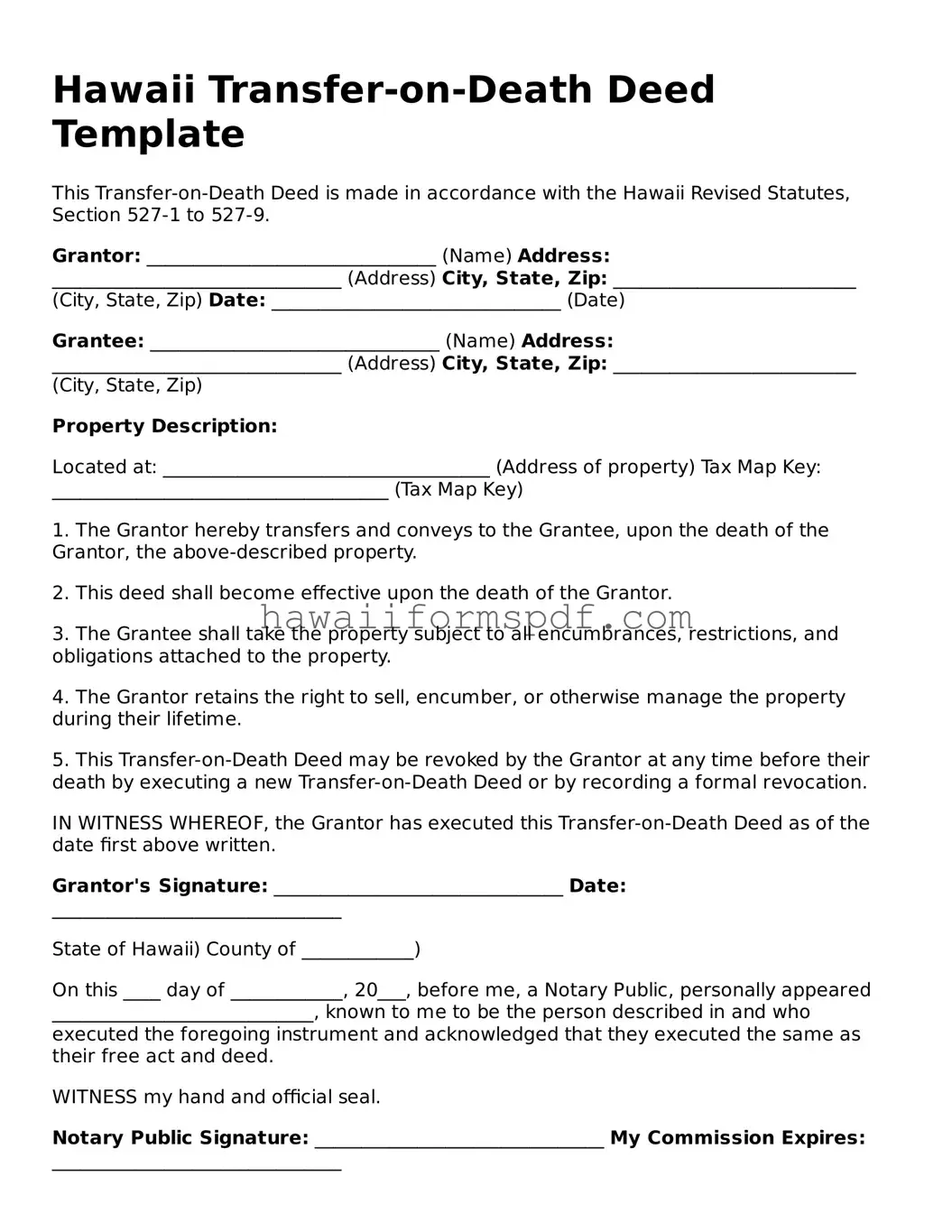Hawaii Transfer-on-Death Deed Template
This Transfer-on-Death Deed is made in accordance with the Hawaii Revised Statutes, Section 527-1 to 527-9.
Grantor: _______________________________ (Name)
Address: _______________________________ (Address)
City, State, Zip: __________________________ (City, State, Zip)
Date: _______________________________ (Date)
Grantee: _______________________________ (Name)
Address: _______________________________ (Address)
City, State, Zip: __________________________ (City, State, Zip)
Property Description:
Located at: ___________________________________ (Address of property)
Tax Map Key: ____________________________________ (Tax Map Key)
1. The Grantor hereby transfers and conveys to the Grantee, upon the death of the Grantor, the above-described property.
2. This deed shall become effective upon the death of the Grantor.
3. The Grantee shall take the property subject to all encumbrances, restrictions, and obligations attached to the property.
4. The Grantor retains the right to sell, encumber, or otherwise manage the property during their lifetime.
5. This Transfer-on-Death Deed may be revoked by the Grantor at any time before their death by executing a new Transfer-on-Death Deed or by recording a formal revocation.
IN WITNESS WHEREOF, the Grantor has executed this Transfer-on-Death Deed as of the date first above written.
Grantor's Signature: _______________________________
Date: _______________________________
State of Hawaii)
County of ____________)
On this ____ day of ____________, 20___, before me, a Notary Public, personally appeared ____________________________, known to me to be the person described in and who executed the foregoing instrument and acknowledged that they executed the same as their free act and deed.
WITNESS my hand and official seal.
Notary Public Signature: _______________________________
My Commission Expires: _______________________________
